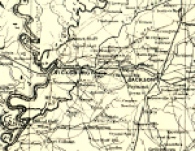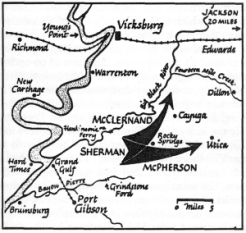In 1951, author S. Skip Farrington, Jr., bestirred himself to see how America’s railroads were faring in the years following World War Two. What he found was a thriving industry open to innovation and dedicated to customer service. In his classic Railroading the Modern Way (Coward-McCann, 1951), Farrington extolled the virtues of the great companies whose heralds, maps, lists of officers, and intricate schedules fattened The Official Guide to the Railways, that indispensable yearly publication, the size of a Chicago phone book, that every ticket clerk and agent in the Republic consulted for the routing of freight and passengers. Farrington raised hymns to powerful diesel locomotives, all-steel cabooses (with electric lighting!), cushion couplings, centralized traffic control, end-to-end radio communication, and luxurious new passenger equipment. Reading Farrington’s work now, one is struck by his implicit conclusion: everything about the railroad was going to stay the same, but it would all be faster, safer, and shinier than ever before. The traveling public could rejoice, and small shippers could rub their hands in glee.
Two decades later, Farrington’s cheery prophecy had collapsed like a washed-out trestle. Those of us who were railroading in those twilight days witnessed changes in the industry far more radical than anything Farrington could have imagined in the money-green glow of the ‘Fifties. From our decrepit yard offices, grimy locomotive cabs, and generic all-steel cabooses (with electric lighting!), we watched as the old resounding road names celebrated in Farrington’s book were gobbled up by mergers. We saw the sale or abandonment of entire districts, the consolidation of agencies, the ruthless encroachment of job-killing technology, and the surgical excision of labor-intensive commodities like perishable fruit and passengers. The government got involved, then it got uninvolved, and then–well, who knows? Traffic agents like my old man– those stalwart, hard-drinking, fiercely loyal drummers who pounded the pavements in search of business–became as anachronistic as link-and-pin couplers and finally disappeared altogether, their once-busy offices abandoned or used for storage.
Railroads, it seemed, had found other interests. Our beloved Illinois Central, for example–once the Main Line of Mid-America–yearned for greater profits, so it redefined itself as Illinois Central Industries and wrapped its tentacles around Pepsi Cola and Whitman Candies and left the now-unprofitable railroad property to wither on the vine. By the mid-Seventies, the Official Guide had shrunk to the size of an L.L. Bean catalog. On our Gulfport District, the maximum main line speed of freight trains had been reduced to ten miles an hour over crumbling lightweight 1930s rail affixed to ties that could be pulled apart in the hand. Three-man crews, with radios that rarely worked, risked their lives trying to switch behemoth tank cars and piggyback flats in yards designed in the 1890s. Almost overnight, the old craft became unrecognizable to persons like myself, who remembered footboards and forty-foot cars and coal-oil switch targets, who had penciled switch lists in the rain, who had passed lantern- and hand signals along a cut of cars and waved at pretty girls from the cupola of a caboose or the cab window of a growling GP-9.
But surely some revelation was at hand. Surely the Second Coming was at hand. The new railroad model, slouching toward solvency with relentless efficiency, was a desperate attempt to survive in a world that had swiftly left Farrington’s ideal behind.
In due season–another ten years perhaps–the railroads accomplished their vision and their survival. The result, as John R. Stilgoe so beautifully illustrates in Train Time (U of Virginia P, 2007), was a tectonic shift in the American industrial landscape. Stilgoe’s book, in perfect counterpoint to Farrington’s, demonstrates how, in less than a half-century, the old clanking, colorful, individualistic railroad companies of folklore and romance vanished like a dream, and in their place rose a new paradigm: the single trunk line, a silvery welded-rail turnpike over which computer-controlled trains with two-man crews hauled inter-modals or bulk commodities. Yard switching became a matter of mere pulling and shoving, and along the main line, switching was minimal or nonexistent. Depots were sold for restaurants or gift shops, freight houses were demolished, and only the most reluctant accommodation was made for Amtrak passenger trains.
Out of the chaos, finally, rose a single indisputable Gibraltar of fact: for the Post-Modern age, no better method exists for the transportation of bulk commodities than a well-maintained, high-speed, computer-controlled, heavy-rail corridor over which fuel-efficient motive power hauls the goods. American mega-railroads have achieved their goal, and American mega-business–not to mention highways and Interstates choked with eighteen-wheelers–will be the better for it.
Like most revolutions, however, that which I have just described was not without its cost. A way of life disappeared, and with it the loyalty men and women felt for the companies that had sustained them, often for generations. Countless jobs were abolished as shops and yards “modernized,” trains were cut off, and maintenance and damage control were hired out to private companies. Small shippers found they were no longer courted; indeed, they were ignored, even bypassed, as the railroad companies pulled up branch lines and spur tracks. Train crews no longer learned on the job, but attended centralized schools like truck drivers or heavy-equipment operators. People, especially poor ones, who still found it expedient to travel by rail were shuffled off to poor old Amtrak, for years the red-headed stepchild of the new empire.
Today, railroads have all but disappeared from the American imagination, where they once held center stage. Through four years of Naval service, I was sustained by the idea that, when I was released at last, I could go and be a railroad brakeman–somewhere, anywhere. I would walk the tops gaily and ride the caboose; I might even get to wear the uniform of a passenger trainman. I could do it for as long as I wanted, for the railroads, of course, would never change, a prodigious delusion as it turned out. In latter years, I have met not a single young person whose ambition was to work for the railroad.
When the family SUV is inconveniently blocked at a grade crossing–OMG! Josh will be late for soccer practice!–or when a derailed ninety-foot tank car of ammonia exterminates a congregation, then the citizens pay attention, a little. Otherwise, most people are only dimly aware of the big, graffiti-plastered objects that lumber past on the edge of their vision. In an age when, for example, the Canadian National operates in Mississippi and Louisiana, the public can hardly be blamed for losing their sense of regional affiliation. Crewpersons, buttoned up tight in their air-conditioned locomotive cabs, do not wave much anymore, and the caboose, the public’s most cherished railroad icon, has long been replaced by FRED, the Federal Rear End Device. FRED is an air-pressure gauge with a blinking red light fixed to the last knuckle of the last car. FRED does not wave, he cares nothing for pretty girls, and trains pass like sentences without punctuation, gliding on their way toward destinations no one can name.
With the exception of amateur rail enthusiasts, most people born after 1970–even most contemporary railroad persons, I expect–have little sense or patience for what the old craft meant, or how important it was in the daily life of generations. My students do not know what a caboose is. They have never heard of the Panama Limited or the Pan American. They think The City of New Orleans is a corny old song their grandparents listened to. This is our collective consciousness now. It is where we need to be if we are to have a viable rail system in the context of the Twenty-First Century. A hard truth, perhaps, but, as old Major R.K. Cross used to say, the truth is a stubborn thing.
And yet. And yet. Some ghosts are hard to shrive from blood memory, and not for nothing do people have a sense of something lost, though they may no longer be able to articulate just what the loss involves. When a person, by chance meeting, discovers that I was once a railroad man, he or she will more often than not voice a familiar lament. “Isn’t it a shame,” the person will say, “that we let our railroads go.” Then, inevitably, he will press on to sing of the supposed glories of European systems, or how, as a child, he rode to grandma’s house on the beautiful Sunset Limited and drank from Waterford crystal in the dining car as the scenery reeled past like illustrations on an SP calendar. I never know how to answer the complaint, nor how to respond to the memoir, so I nod my head and remain silent, wondering if the person understands what he is saying. He is unaware, I think, that the guilty collective pronoun included the railroads themselves. He forgets, perhaps, that the complexities of modern life offer no alternative. He forgets, most of all, that one can no longer expect Waterford crystal in a culture that has agreed unanimously on the Styrofoam cup.
Nostalgia has little virtue save for them who have earned it. In the end, Nostalgia, and its consort Romance, are an insult to the old ones who spent half their lives in cheap hotels; who saw their comrades cut in half or mangled under the wheels; who felt the loneliness and isolation of flagging behind in a ghostly fog; who understood that a steam engine, for all the mournful poignancy of its whistle, was a hard taskmaster and a deadly one. Nostalgia and Romance conceal, and therefore dishonor, the fact that old-time railroading was a real bitch, a dangerous and lonely and demanding craft, and those who followed it, especially in train or engine service, dwelt always on the edge of catastrophe. To paraphrase my old friend Frank Smith, a switch engine foreman of thirty years service, if you got home after the job without having killed someone or turned something over, your day was a success.
And yet, for those of us who lived the old craft, no coldly efficient, high-speed computer game can replace it. Perhaps too much happened for too many years out there in the night when the old trains ran. There was too much death, too much honor and meanness, too much tragedy and glory and fun, and too many souls were moved by the distant cry of a locomotive–steam whistle or diesel horn, no matter–for it all to be erased by corporate ukase. Something of the old life remains, something deeply human and therefore messy and dramatic, to haunt the memory of the Race.
Once, Frank Smith and I were talking to a gentleman who had worked his whole life on the now-vanished Columbus and Greenville Railroad. Beside him sat his wife, a gentle, silver-haired lady whose eyes glowed with the knowledge that she and this old rascal had been married sixty-one years and had made it work. The old man patted her knee. “Ever’ time I’d leave on the job,” he said, “my wife would make me a bucket of fried chicken. I used to throw the bones right out the cab window, a lot of bones all down the main line, years and years.” He thought a moment, then smiled. “Lord,” he said, “wouldn’t it be funny if them bones was to rise again.”
Funny, indeed, and an irresistible image: hundreds of white leghorns rising from the dust, gazing about, puzzling how in the world they ever got there, all wandering forlorn along the weed-choked iron of the old C&G. Meanwhile, all across the Republic, outside the trembling windowpanes of restored depots and freight house museums, the big anonymous trains roll on, the cone of their headlights pointed toward tomorrow.
















